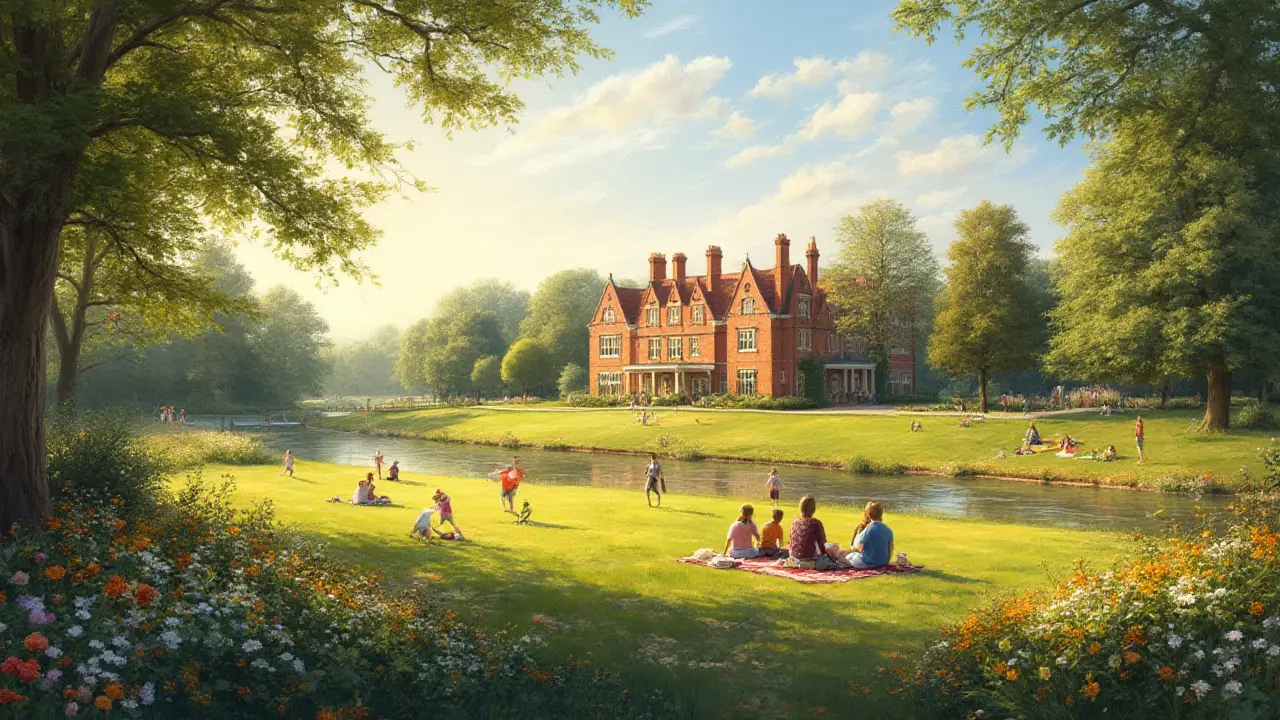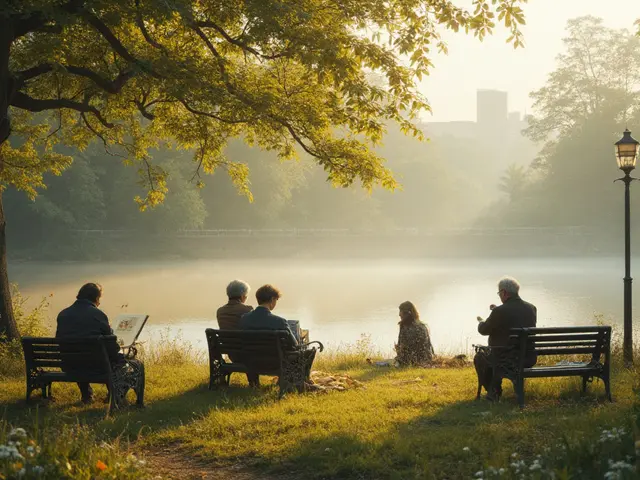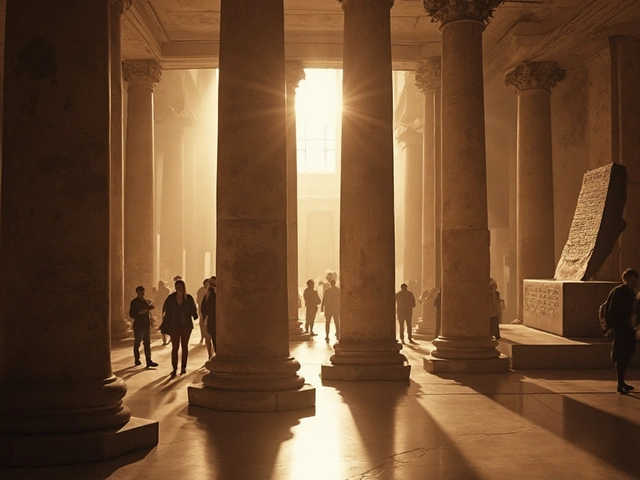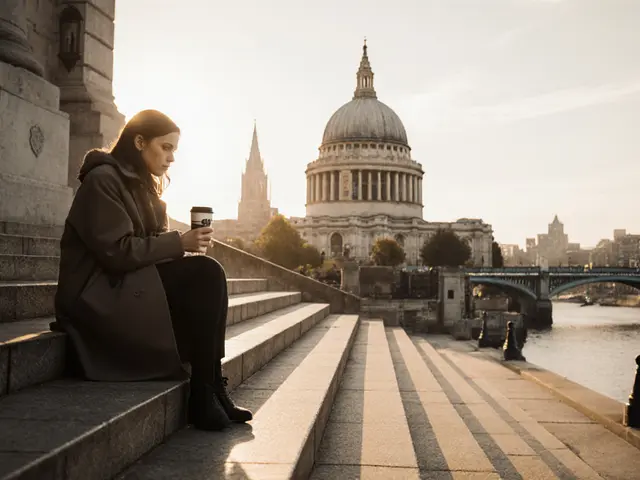If you live in London, you know the endless buzz—hustle of commuters, roaring buses, city lights even at 2am. But sometimes, you crave a proper escape. Not just a stroll in Hyde Park or a lazy afternoon at Hampstead Heath. We’re talking winding roads, rolling fields, those picture-perfect villages most Londoners secretly search for on Google late at night. Londoners have the world at their doorstep, but a scenic drive could be the reset you never knew you needed. The challenge? Finding those nearby green gems without spending half your day in traffic on the M25.
The Best Parks for Scenic Drives within Easy Reach of London
If you want nature but don’t fancy spending hours on the road, you’ve picked the right city for car-based getaways. Get this—around London, there’s a green ring dotted with parks, National Trust sites, and Areas of Outstanding Natural Beauty within an hour or two. Richmond Park comes first for city dwellers. This one’s famous for free-roaming deer, winding lanes perfect for a slow roll, and sudden views over the Thames. Arrive just after sunrise, and sometimes the mist curling above the grass will remind you of a movie set. Sure, cycling is king here but motorists can cruise through many of the park roads -- just check weekend restrictions first, especially during peak deer rutting seasons in autumn.
Just a bit further out—follow the A24 south, and you’ll hit Box Hill in Surrey. It’s a cyclist’s haven, because of the 2012 Olympic route, but drivers will love the switchbacks and lookout car parks. The view across the Surrey Hills is unbeatable on a clear day. If you’re magically avoiding rain, bring a picnic and watch paragliders launching off the hillside. Head a little downstream from Box Hill, and you get to Denbies Wine Estate. Yes, there’s wine in Surrey—and yes, you can park up and taste it.
Epping Forest, to London’s northeast, offers another route. Expect ancient woodland, sudden ponds, and, in spring, a show of bluebells under ancient beeches. High Beach is the most famous lookout—park here, stroll, then drive the forest-skirting routes to see a shifting palette of greens and golds. Watch for cyclists darting in and out, but on quiet mornings, you almost forget you’re still in Greater London.
For more ambitious drivers, the Chilterns stretch west and source endless photo ops. Head towards Great Missenden (think Roald Dahl country) or Wendover Woods. The country roads dip and weave, sometimes lined with wildflowers, sometimes flanked by spectacular beech tree tunnels. Local pubs here are the kind you want on a postcard—dog-friendly, muddy boots welcome, Sunday roasts you’ll be thinking about all week.
Beyond City Limits: How London’s Culture Shapes Scenic Day Trips
London has this unique thing—it’s a global megacity ringed by intense history and preserved landscapes. Londoners have always appreciated green escapes; blame it on history or just the pure need to breathe differently than in a Starbucks queue. Since the Victorian era, when trains and later the motor car made a day out possible, heading to the nearest patch of unspoiled country became almost ritual. Even today, you’ll notice groups of friends loading up Zipcars, thermos coffee in hand, planning their route to ‘get out’ for the weekend.
The Queen’s deer in Richmond and the wild ponies of Epping Forest—these are sights that turn even the most resigned urbanite a bit sentimental. There’s something undeniably British about following a b-road flanked by hedgerows, listening to BBC Radio 4, then stumbling on a country market selling homemade fudge. When the weather is giddy with sunshine, even lifelong Londoners agree: nothing beats the feeling of crossing the city line and breathing countryside air.
These drives aren’t just about escaping work emails. They connect you with Britain’s landscape tradition—National Trust tearooms, parks filled with legends, stone bridges, and sheep that seem to take a starring role in every photo. British weather is notoriously unreliable; always check forecasts if you’re heading to Chilterns or Surrey Hills. Nothing ruins a view like a sudden downpour—unless you’re the kind who likes watching storms from the comfort of your car, window slightly ajar.
Modern traditions blend into this culture, too. Don’t be surprised if you pass a group doing a park run in Richmond Park, or spot a vintage car rally stop at a Chilterns village hall. There’s real pride here—local communities maintain footpaths, protect wildlife, and even celebrate seasonal events like bluebell walks or autumnal leaf trails. If you’re lucky, you’ll time your drive past a local fête or food fair. Don’t skip these; you’ll find homemade cakes and the best sausage rolls outside your favourite London bakery.

Tips for the Perfect Scenic Drive Escape from the Capital
Timing is everything. Avoid peak traffic—Friday night rush or Sunday evening returns are the stuff of commuter nightmares. Try heading out early on a Saturday or even midweek if you can flex your schedule. Always check if the park you want to visit restricts vehicles on event days; Richmond Park and Epping Forest occasionally limit car access for conservation or local festivities.
Pack for the unpredictable. British weather is as changeable as the Tube map on a strike day. Bring a raincoat, a blanket, and extra snacks. Not every scenic route is lined with petrol stations or Pret a Manger—carry water and maybe a flask of tea. If you’re heading out with friends or family, a playlist of classic British road trip songs—bit of Bowie, a dash of Beatles—never hurts.
If you don’t own a car, there’s no need to feel left out. Services like Zipcar or Enterprise Car Club dot London, and both let you pick up vehicles close to major train stations. For the electric-minded, there’s a growing network of charging points along major countryside routes—check apps like Zap-Map to plan your stops. Don’t ignore public transport altogether, either. Trains from Paddington or Marylebone reach the Chilterns in under an hour; plenty of villages have taxi stands or bike rentals waiting for day-trippers.
Navigating narrow country lanes can be its own adventure. Take it slow; give way at passing points, and be ready to stop for runners, horses, or families out walking their spaniels. Rural speed cameras pop up when you least expect them. Respect speed limits—a scenic drive is about the view, not topping your personal best.
Finally, check local websites for any major park events, closures, or parking regulations before you leave. And if you’re thinking about that perfect Instagram shot, remember: some of the best moments happen when the camera’s off and all you hear are birds, leaves, and maybe the gentle beep of your sat nav telling you you’ve gone the wrong way (again).
Local Events, Hidden Gems, and Best Places for Scenic Stops
Londoners who wander out on weekends know the park highlight calendar almost by heart. In late spring, the bluebells in Ashridge Estate—just north of the M25—draw crowds. Try getting there before 10am for parking. Come summer, the lavender fields at Mayfield near Banstead bloom in deep purple for just a few weeks. The local farm café does a mean Victoria sponge and they don’t mind muddy shoes or tired children.
Late September to November, it’s deer rutting at Richmond and Bushy Park. Keep your distance from the stags—they’re beautiful but famously grumpy. Further out, the Chilterns’ autumn leaf shows hit their peak mid-October. Try the Hambleden Valley for a less crowded stroll, wedged between beech woods and film-perfect villages. Some days, you’ll catch a classic car group zigzagging through the lanes, shiny Jaguars glinting under the trees.
If you want something quirky, drop in on Epping Forest’s annual fungi foray. Park at Connaught Water and follow the mycology enthusiasts as they hunt strange mushrooms—some edible, some just bizarre. Local guides provide free walks (early booking recommended, especially post-lockdown when wild food foraging boomed in popularity).
Keep an eye out for farm shops. The Chilterns and Surrey Hills hide dozens of places selling local cheese, honey, eggs, and crafts. Wendover’s farm bakery has lines out the door for its cinnamon buns. Denbies in Surrey, apart from wine tasting, hosts seasonal craft fairs and pop-up food stalls, so check their website before you set off.
Here’s a quick look at just a handful of classic parks, what they’re famous for, and distance from central London:
| Park/Location | Main Attraction | Distance from London (km) | Seasonal Tips |
|---|---|---|---|
| Richmond Park | Free-roaming deer, panoramic city views | 12 | Visit in autumn for rutting season; early mornings best for misty scenes |
| Box Hill (Surrey Hills) | Switchback roads, hillside views | 38 | Summer is peak for picnics; try sunrise drives for quiet roads |
| Epping Forest | Ancient woodland, wildlife, lakes | 27 | Bluebells late April-May; autumn for fungi walks |
| Chilterns (Great Missenden) | Scenic lanes, literary heritage (Roald Dahl) | 59 | Autumn leaves in October; Sunday village markets |
| Mayfield Lavender Farm | Vivid lavender fields, rural café | 23 | Visit late June-July; best early morning |
Not all treasures make the guidebooks. Sometimes your favourite spot becomes that random pub car park near a silent field, or the bluebell glade you found only after taking the wrong exit off the roundabout. That’s the real charm—London’s riches, but with a twist of wild, open air close enough to never feel the city’s weight for too long.



